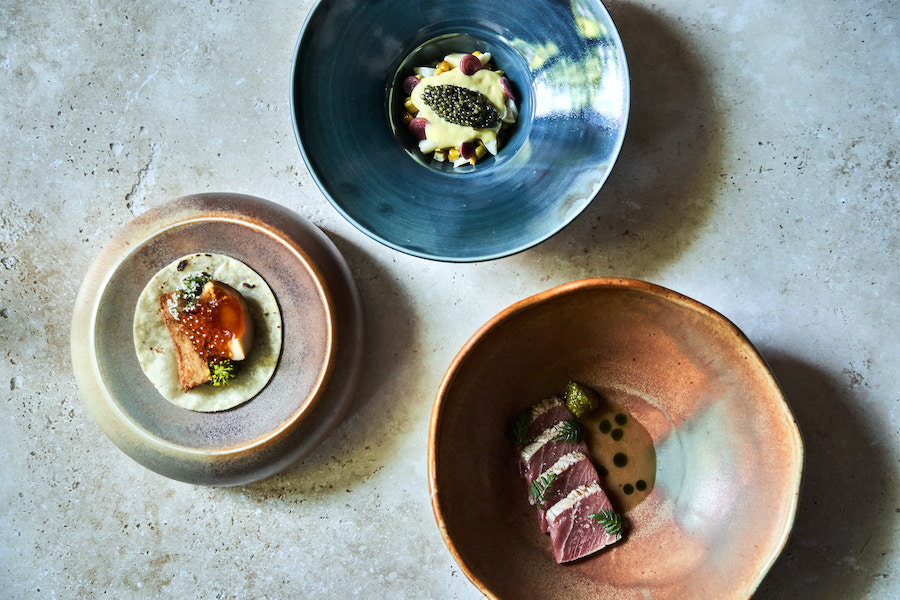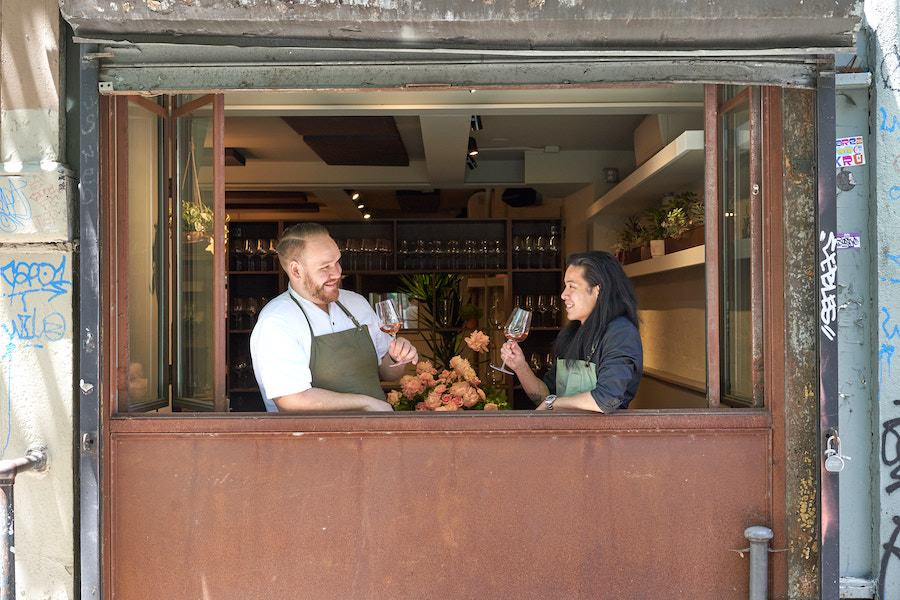
ICE Alum Samuel Clonts' New Take on Fine Dining
The Culinary Arts grad opened his first restaurant, Sixty Three Clinton, in New York City.
After moving from Arizona to New York to enroll at the Institute of Culinary Education, Samuel Clonts (Culinary, ’12) quickly worked his way up through the city's fine dining scene. After opening his first restaurant, Sixty Three Clinton, he offers advice on menu development and culinary careers.
New to New York City at 19-years-old, Samuel Clonts enrolled in culinary school looking to break into the world of fine dining. He had kitchen experience from a Ritz-Carlton in Tucson, Arizona, and was keen to make industry connections.
After graduating and working his way up at three-Michelin-starred The Chef's Table at Brooklyn Fare, an upscale French-Japanese fusion eatery, Samuel was looking for something new. He turned to a friend he made at culinary school who happened to know the owner of a soon-to-open restaurant, Bar Uchu. The owner and Samuel hit it off. He opened the eight-seat restaurant as executive chef in June 2017, earning a first Michelin star by September when Samuel was just 26-years-old.
“I still have friends that I met in culinary school that led to connections down the road,” Samuel says. “For that, it was irreplaceable.”
Now he and long-time friend and business partner Raymond Trinh opened Sixty Three Clinton, a modern American restaurant in New York’s Lower East Side, in July — and it's already booked three weeks out. Samuel said it’s “the first chance to do whatever we wanted to do.”
Building a Menu
Brooklyn Fare, Bar Uchu and Sixty Three Clinton are all fine-dining restaurants with creative tasting menus, but Samuel wanted to rethink his restaurant’s approach. Throughout the pandemic, he and his partner talked about what fine doing would look like once restaurants reopened. Would people want to go back to white tablecloths and four-hour meals for upwards of $200 a head?
“We just want to do a good honest meal for an approachable price point and get more people in the door that way,” Samuel says.
Sixty Three Clinton is in a relaxed space that seats around 40 people, charging a little over $90 a customer. The menu draws from Samuel’s life: Japanese influences from his time at Brooklyn Fare and Bar Uchu; classic French and Italian touches he’s learned over the years; and a bit of home cooking from his Arizona roots.

Creating a coherent, resonating menu — instead of one that just feels like a collection of different dishes — comes from personal experience, Samuel says. Building a menu that tells a story needs to come from a personal place. Sixty Three Clinton has a pie dish on the dessert menu as an ode to his mother’s recipe, for example.
“If I look back now at the food I tried to serve four years ago, I don't think it was anything near what it should've been or what I could've done now with more experience. People definitely bond more to personal touches or stories behind why I'm serving this,” Samuel says.
Getting a Restaurant Job
Samuel got his professional start at Brooklyn Fare, where he’d work for nearly six years. He spent some time in the front of house and did just about everything in the kitchen. He says it’s valuable for aspiring chefs to work front and back of house because “if you're leading a team, you have to understand everyone's experience working there.”
Brooklyn Fare was the only place the chef wanted to work, so he went to the restaurant four times to ask for a job in person. Now that Samuel owns his own restaurant, he says personally dropping off resumes is a great way for students and hopeful chefs to make an impression, instead of just firing off emails. Of course, ICE's Career Services helps students with externships and job placement.
“Even now when I'm looking to hire people, that always makes the biggest impression. You see someone's face. You know they're very interested if they're taking their day to come in,” Samuel says.

Samuel went from a teenager working at a hotel kitchen in Arizona to earning an ICE diploma and gaining Michelin-starred restaurant experience before becoming a restaurateur. With connections from culinary school in his back pocket, he was finally able to break into fine dining and says it just takes a little bit of patience for current students to do the same.
“Find somewhere that you really believe in what they're doing. Put in your time. Work in one great restaurant for a couple years and learn everything you can and have persistence. Have patience for the right things to come along.”
Pursue your culinary career path with a diploma in 8-12 months at ICE.


Add new comment